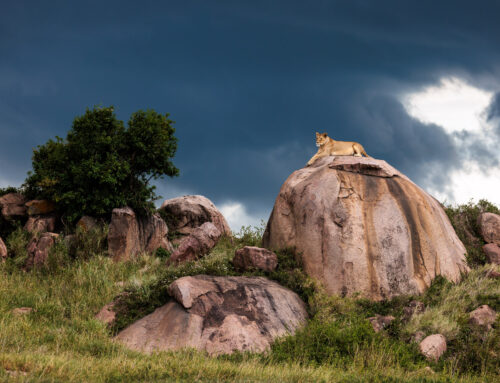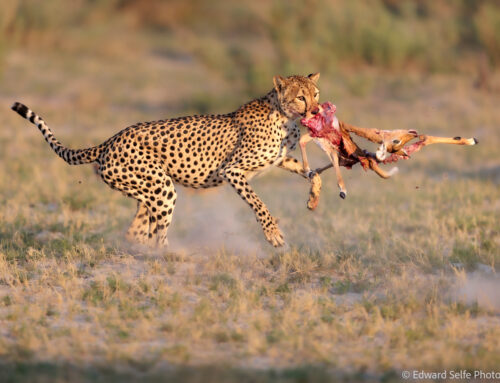In the Luangwa, it doesn’t get much better than a 12 night trip split between the hides of Shenton Safaris, the rich predator area of Lion Camp and the beautiful remoteness of Nsefu Camp. This was a trip that I had anticipated for a long time….and it didn’t disappoint. I met Steve, John, Linda & Mike at Mfuwe airport one hot Sept lunchtime and headed to the beautiful Kaingo Camp. The action started right from the first afternoon drive… Read on for the details:
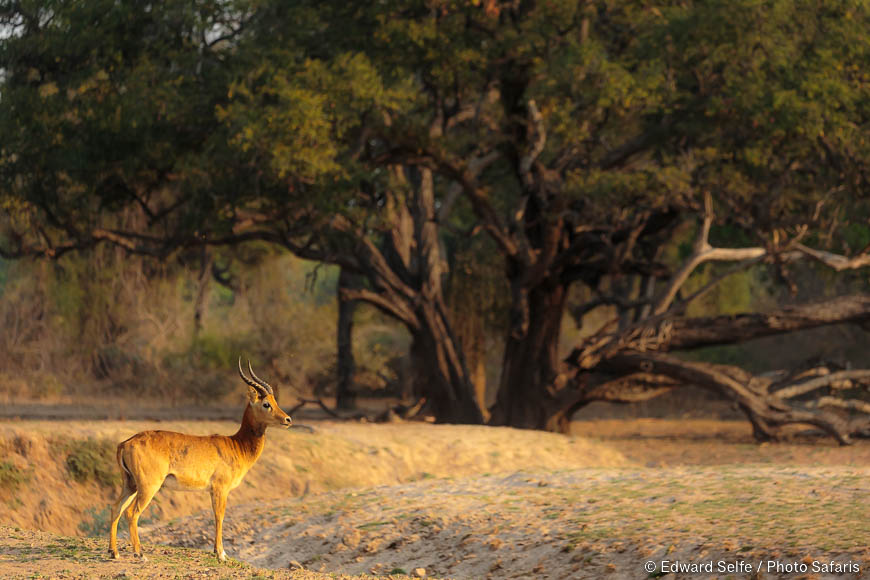
When you leave camp in the northern part of the South Luangwa, you better keep your eyes open. You’re immediately into some of the best game viewing in the valley. And so it was that this male puku’s idle stare, and the occasional shouts of baboons….
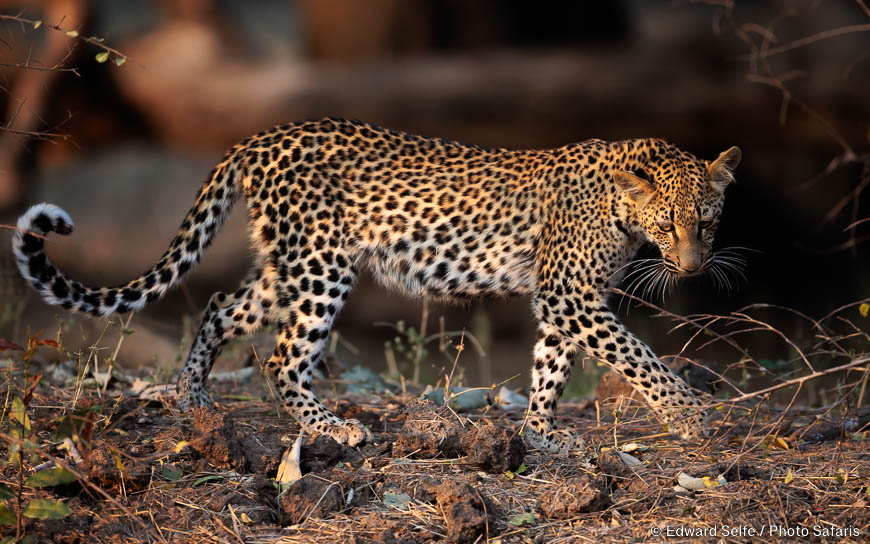
…led us to this young female leopard, her brother and their mother lounging around in the ebony grove near Kaingo Camp.
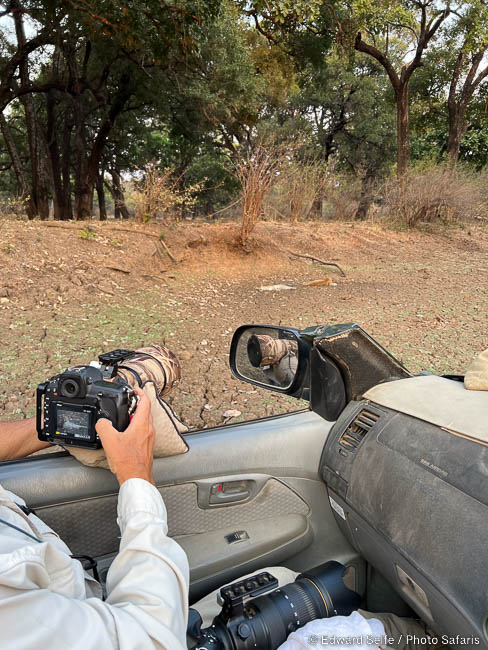
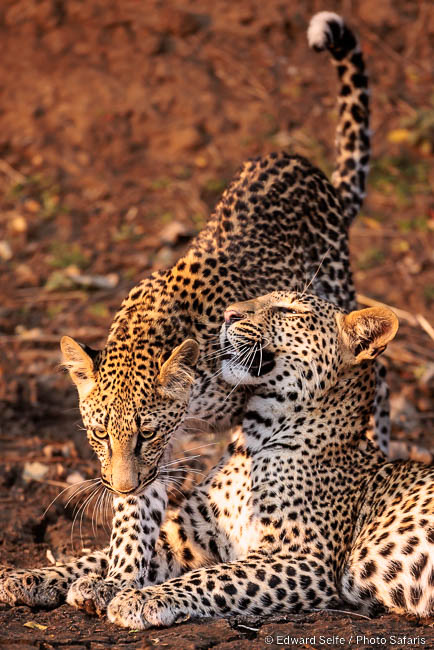
It was still warm when we found them, but we sat with them and they started to stir. The young female came to rub heads with her brother, before wandering off to find their mother who was picking scraps off the rest of an impala carcass that they had stashed in a bush.
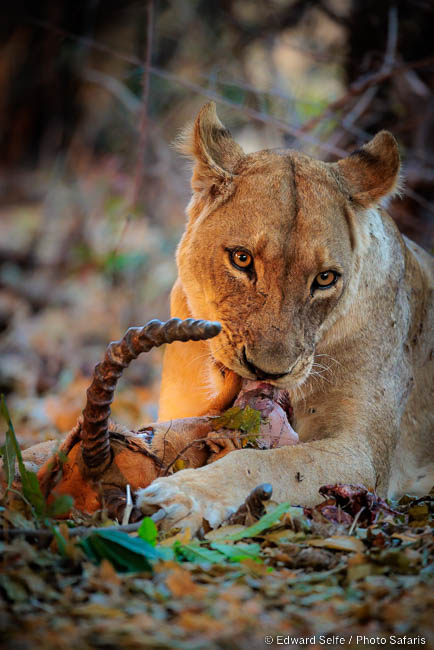
We returned the next day into one of the most intense game-viewing periods in my 15 Luangwa years… Two lionesses had recently stolen the carcass from the leopard family. Why they had not taken it into a tree is a mystery, but Chiphadzuwa often keeps kills on the ground, and therefore often loses them!
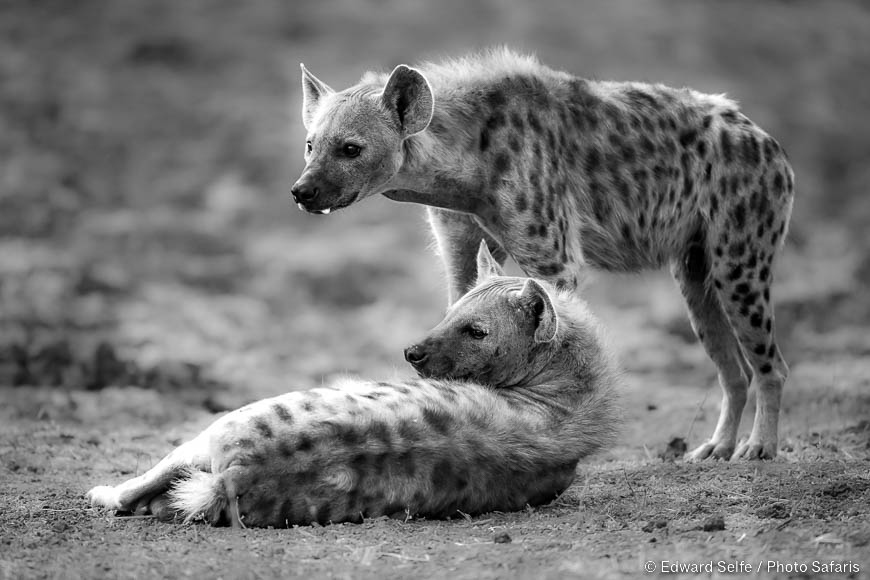
Nearby, spotted hyaenas were beginning to mass, hoping to launch a takeover from the lionesses. They tried once and were firmly repelled by the second lioness who was not feeding at the time.
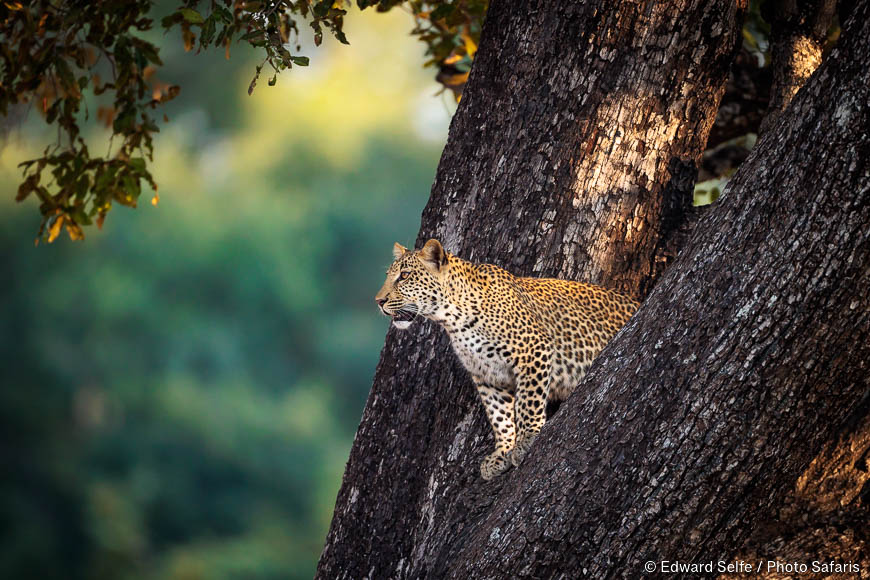
Just 100m away, one of Chiphadzuwa’s cubs was up in an ebony tree, watching all the action. He seemed interested rather than fearful! We soon heard more growling and worked out that Chiphadzuwa was in the tree above the lionesses…presumably she had tried to get the carcass into the tree, been too late and had to flee for cover, dropping the carcass as she went.
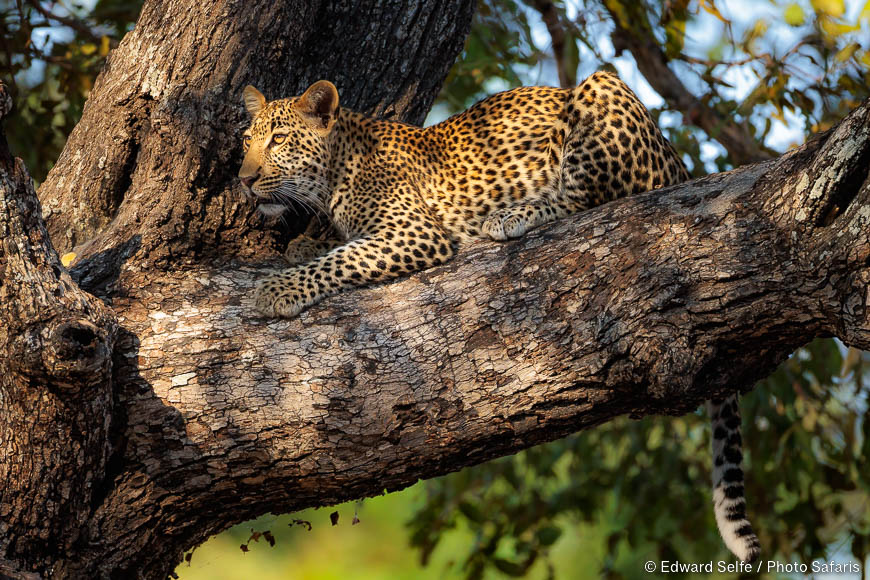
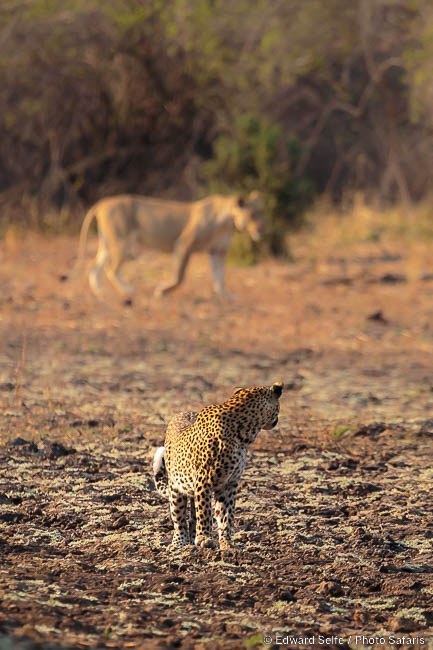
Chips finally managed to get down….but only during the commotion caused by the arrival of a young male lion which had been drawn to the noise! She escaped and turned back only briefly to watch the lioness as she passed.
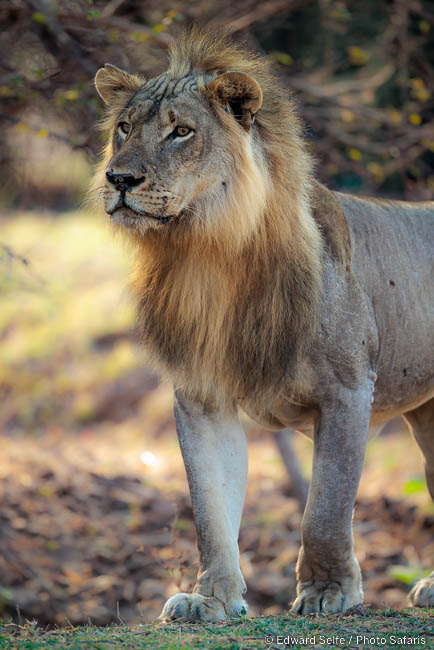
The male seemed disappointed by the small size of the leftovers, ate them anyway, and then proceeded to pursue the females around, hoping for the chance to mate. Eventually, we left the leopards cowering in their respective trees, the lionesses running inland with the male in pursuit (he quickly got bored) and the hyaenas prowling around looking for small scraps!
To be honest, that was a highlight of my time in the Luangwa, let alone of a 12-day safari, so I wondered what on earth would come along next!
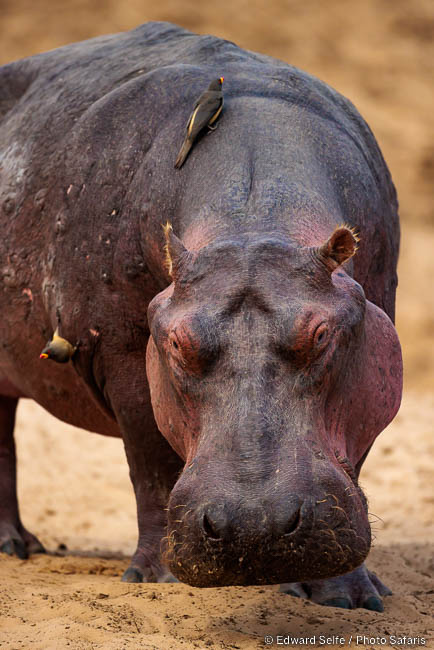
For the rest of our time at Shenton Safaris, we focused time on the hides. Kaingo has access to a hippo hide which gives low angle views of these leviathans….
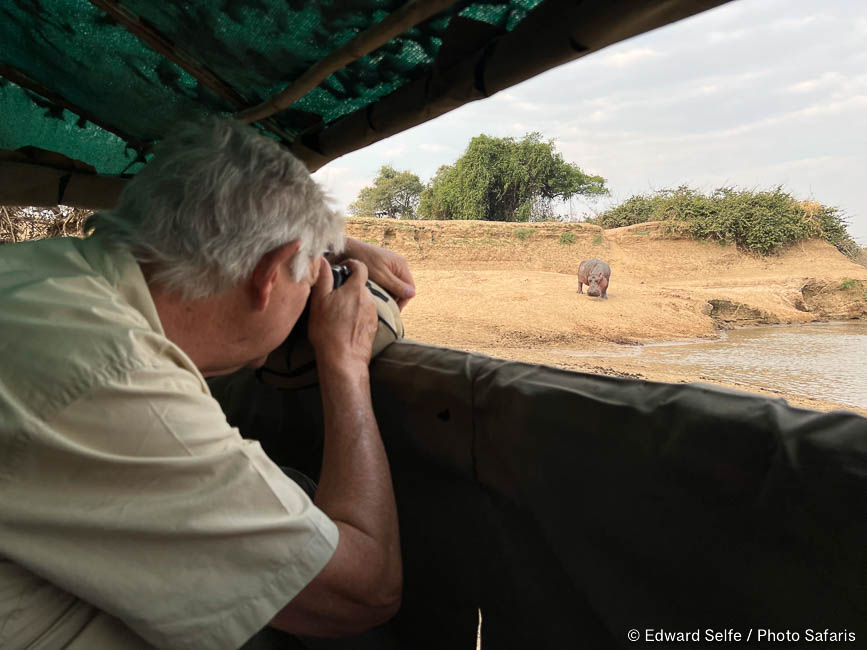
..and gives visitors the best angle…
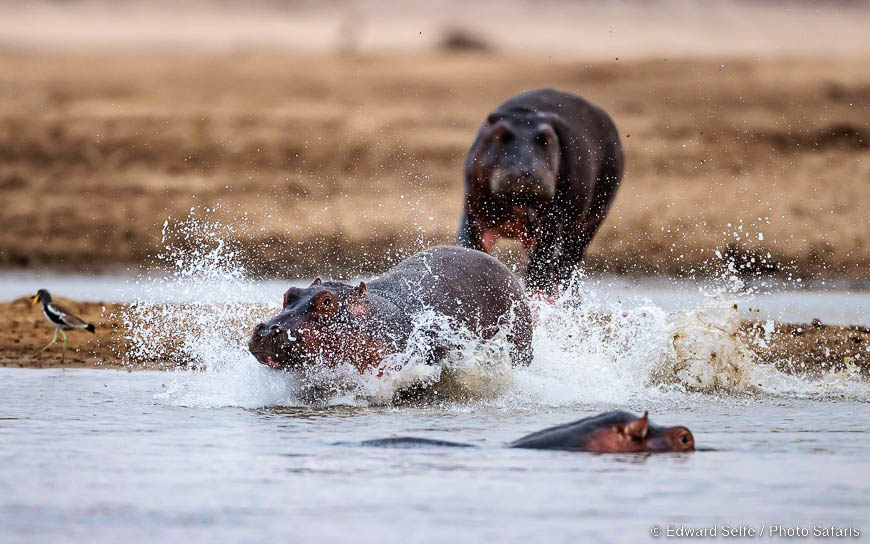
…for the action.
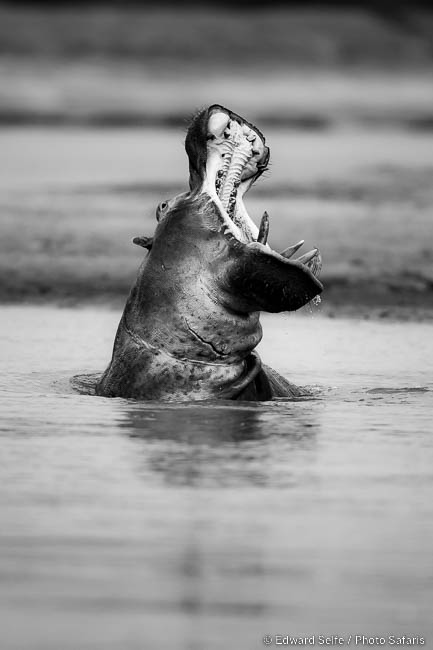
There are thousands of hippos in the Luangwa, but it’s not until you can get down to their level that you can appreciate how spectacular they are.
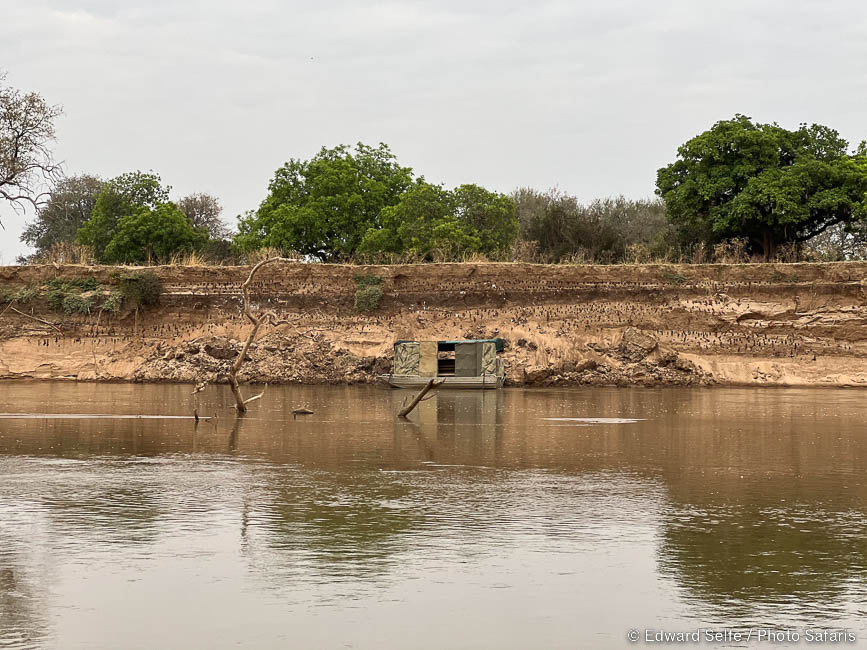
The next day it was time for the carmine bee-eater hide, a hide built on two canoes up against the bank of the river, under (or should I say ‘in’?) a bee-eater colony.
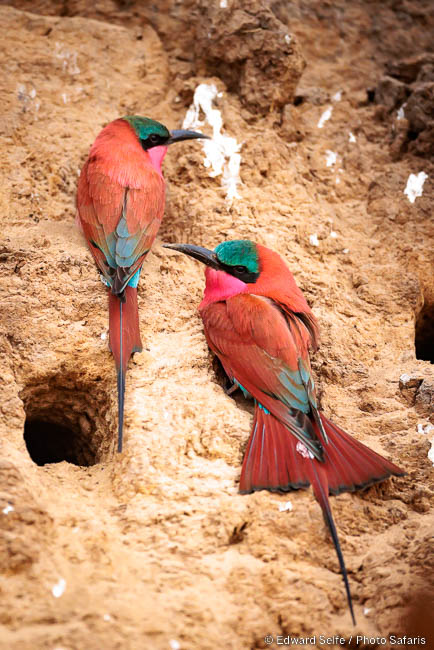
Once inside, visitors are just 6-8 feet from the wall of the bank and there is no better way to get epic photos.
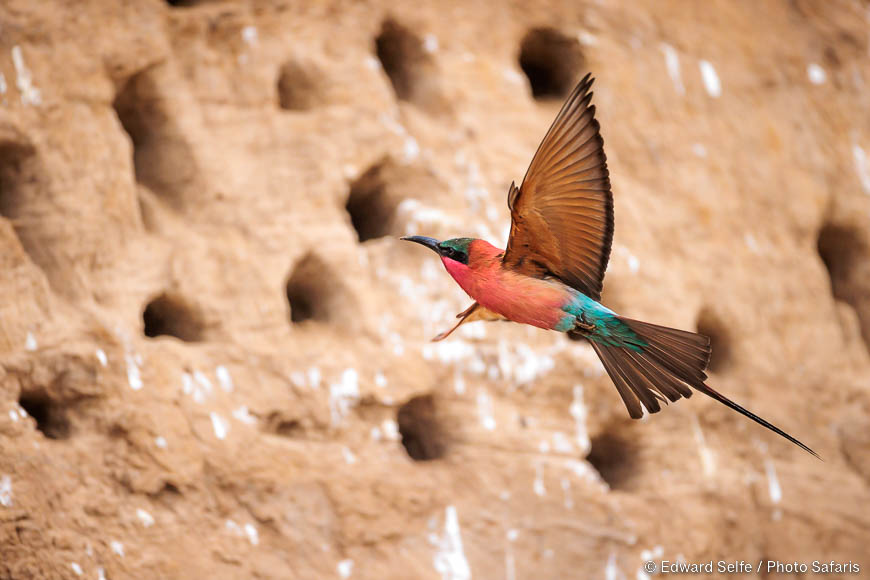
If you can follow them with your camera, it’s also possible to get amazing flight shots too!
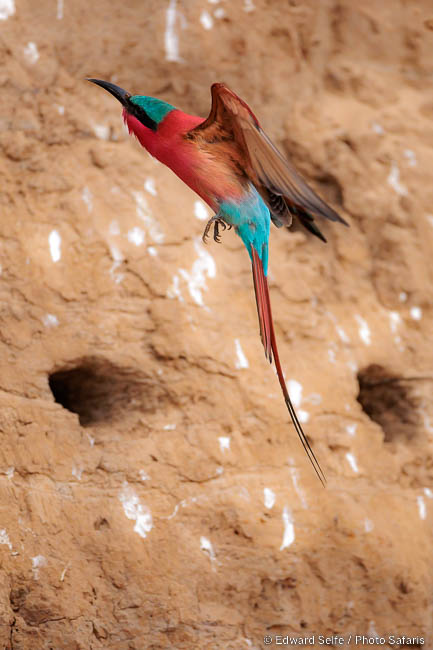
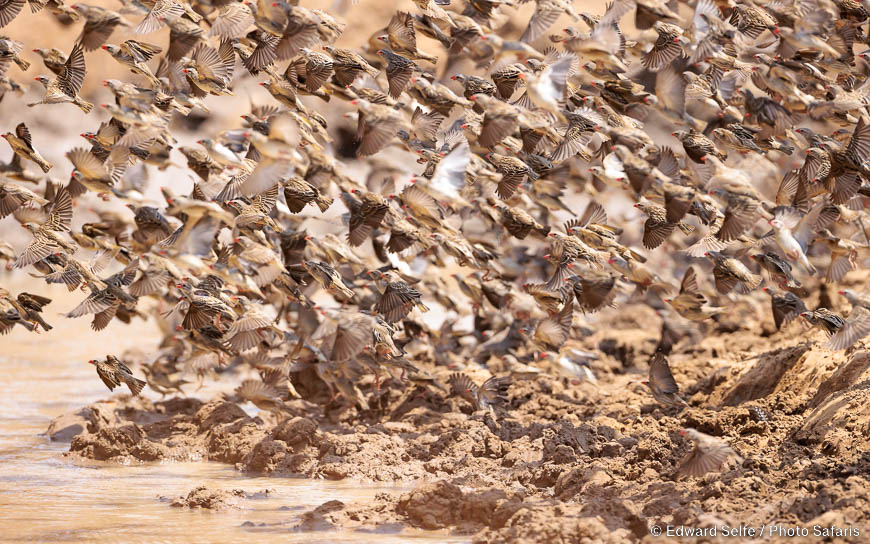
Finally, we also spent time at the Last Waterhole hide at Mwamba Camp. This low-level hide is eye level with a small waterhole just behind Mwamba camp which is accessed only by the 8 guests in that camp… The close ups of birds coming to drink….
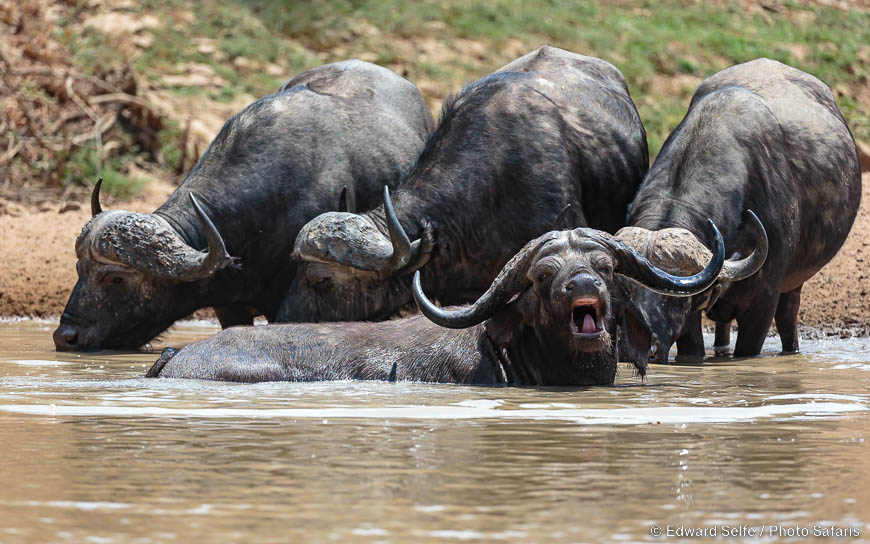
…and buffalo coming to wallow are fantastic.
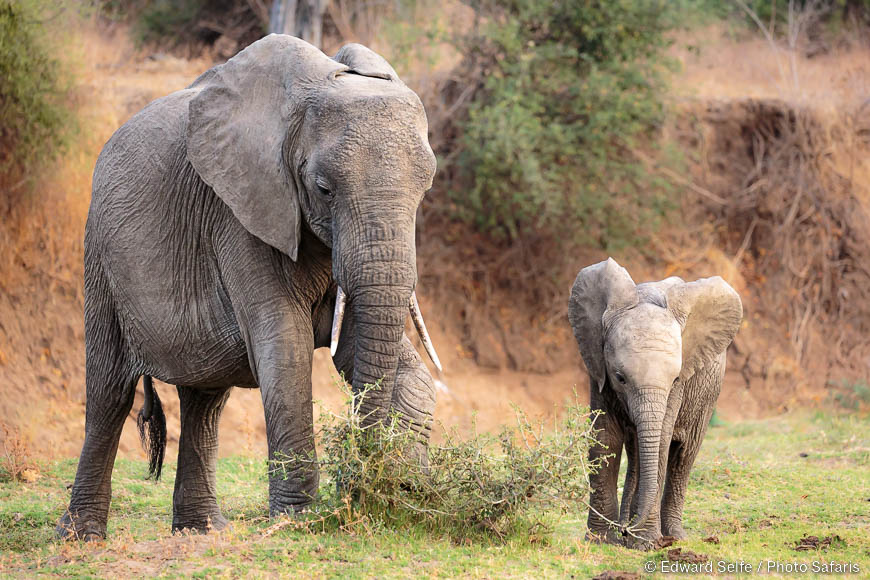
Not to mention the chance to photograph elephants as they come to visit, cautiously in the case of this female and her calf.
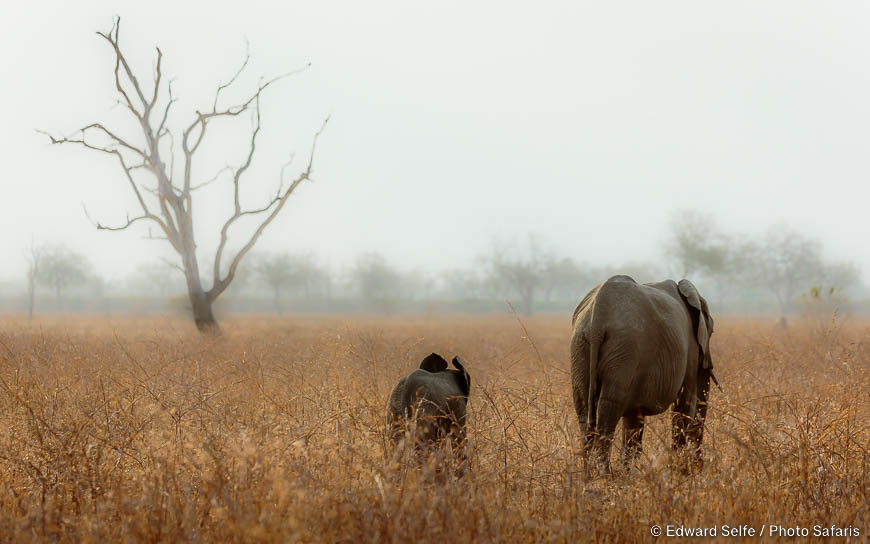
On game drives around Mwamba, we stayed inland, enjoying the grassland areas where kudu, zebra and elephants can be found in good numbers.
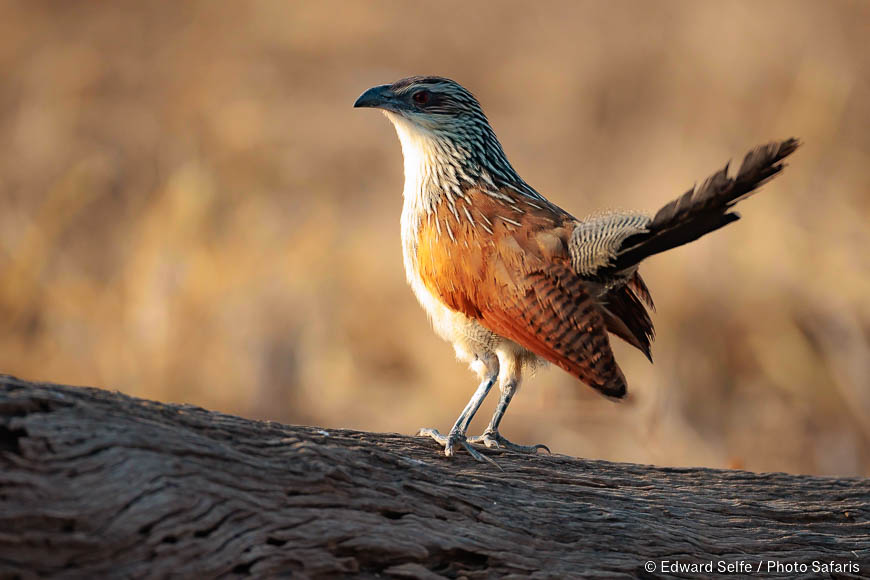
It’s also a busy area for birds eeking out a living in the late dry-season.
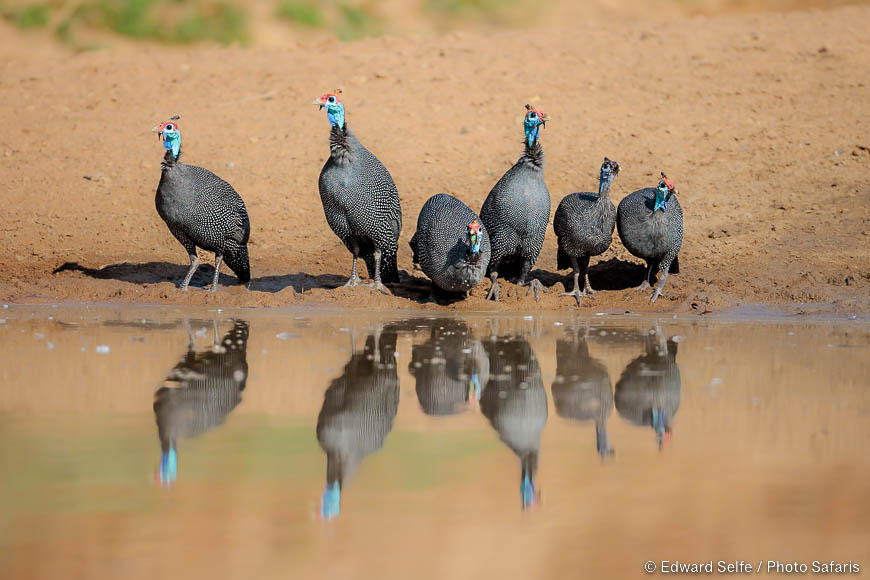
But each day, we would return to Mwamba’s waterhole to wait, expectantly, for whoever would come along.
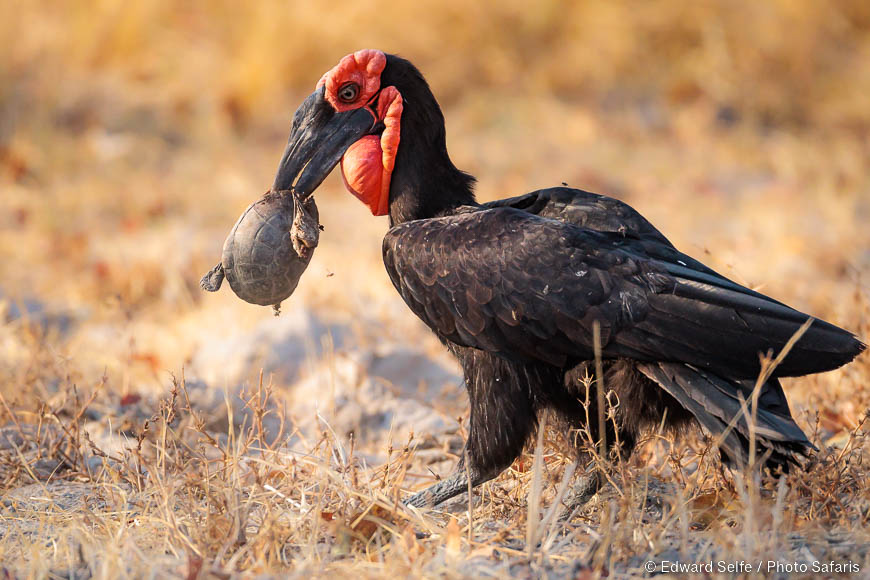
A particular highlight for me was watching this ground hornbill feeding on the carcass of a serrated-hinged terrapin.
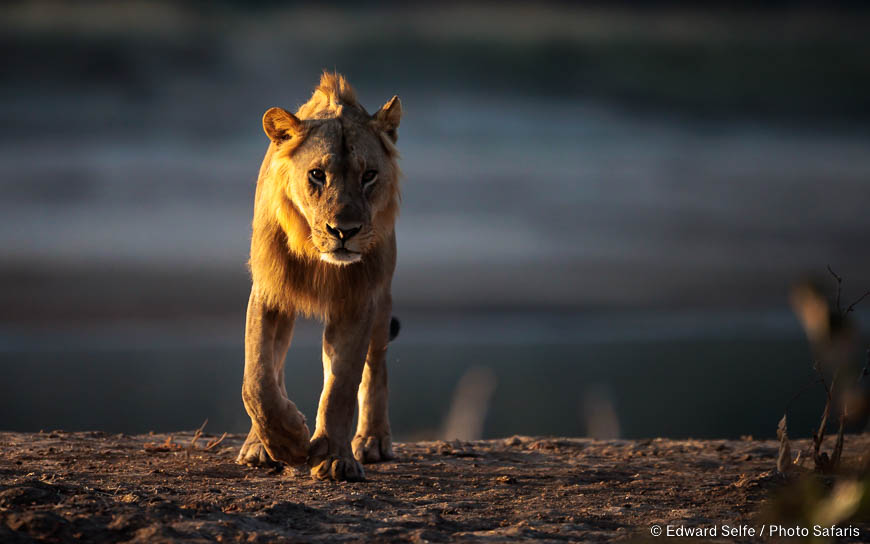
Superb light in the early morning on a couple of young males who came across the river from the Nsefu Sector….
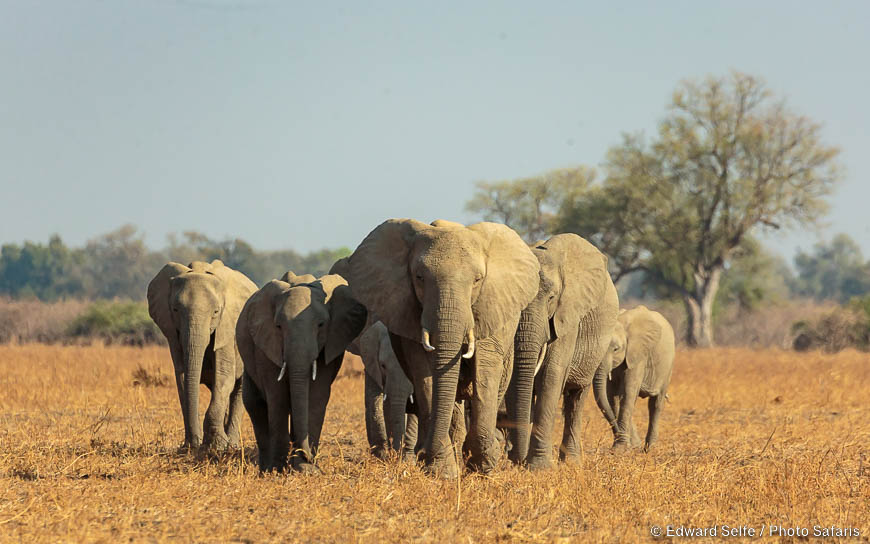
…and a Jungle Book style train of elephants crossing the plain towards us one morning.
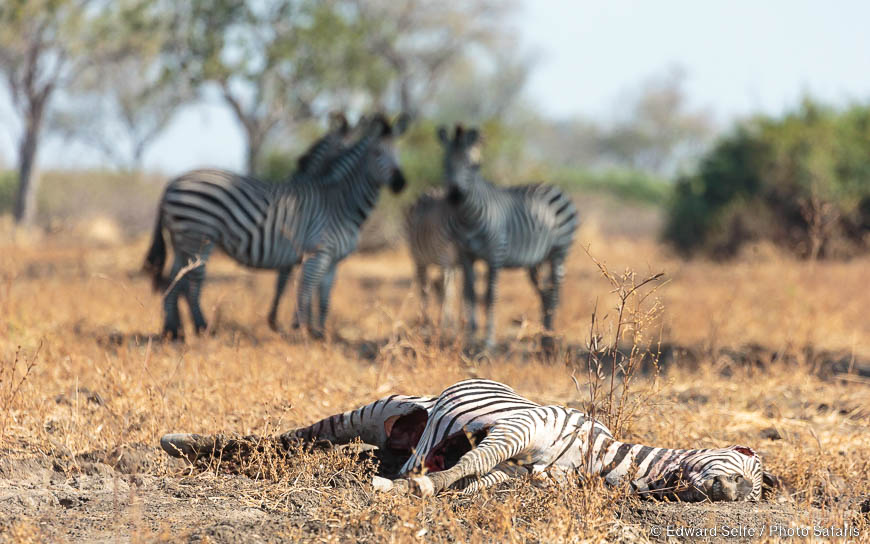
One of the best things about staying a long time in an area is that you have a chance to follow stories from start to finish. We had seen a zebra with a badly broken leg the previous morning so, even though we were moving to Lion Camp that day, we were able to keep an eye on the sitaution….
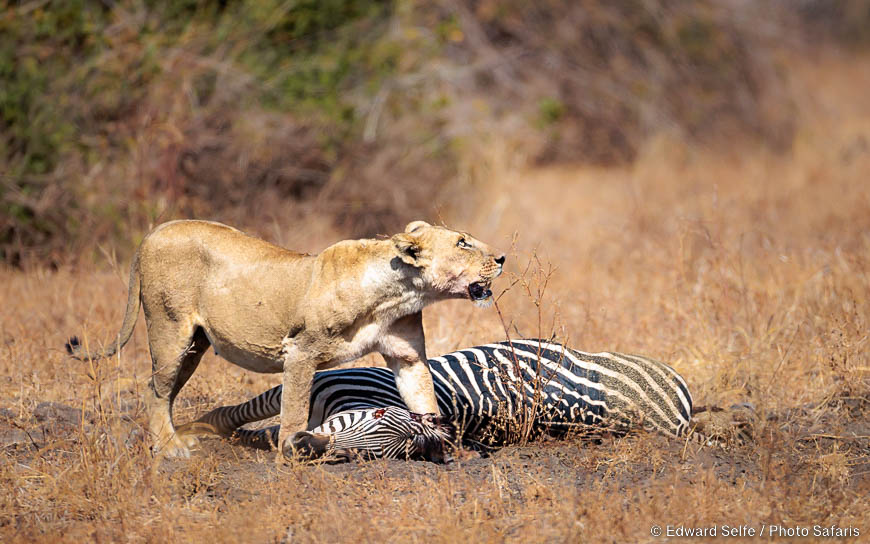
….and were not too surprised, just the next day, to find that one on the Hollywood lionesses had killed it and was feeding. But it was getting late in the morning and the vultures were starting to circle. The lioness was split between protecting the carcass and keeping out of the hot sun. She ate her fill and lay in the shade nearby so we knew there wasn’t much more action for that day….
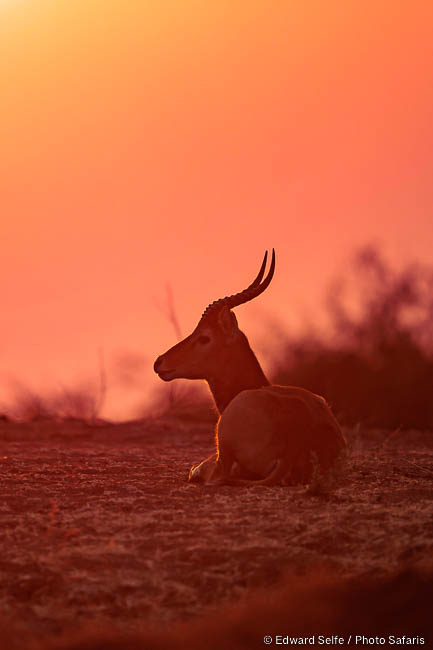
…adn we went to use the light in the best way we could find.
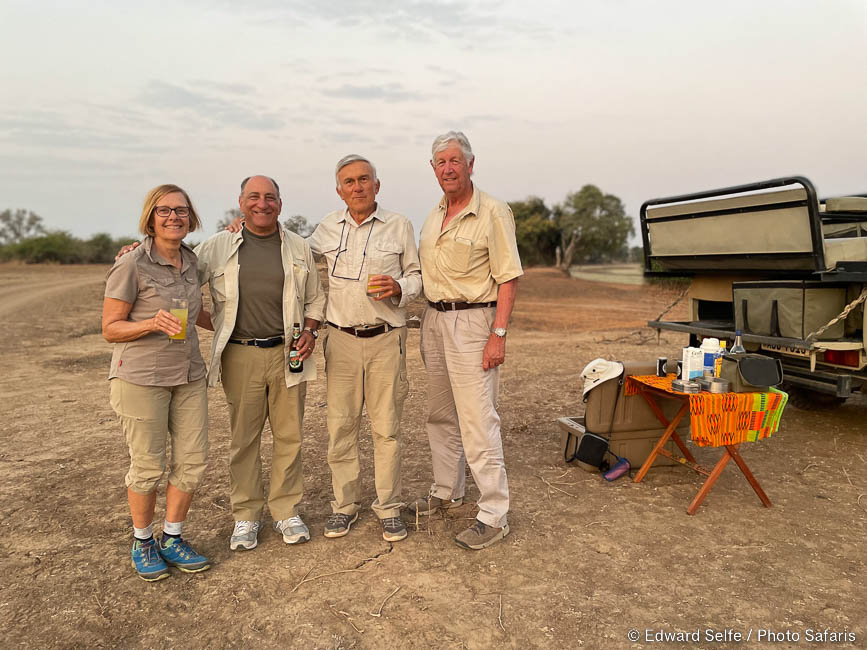
A rare sundowner stop in (just about) daylight!
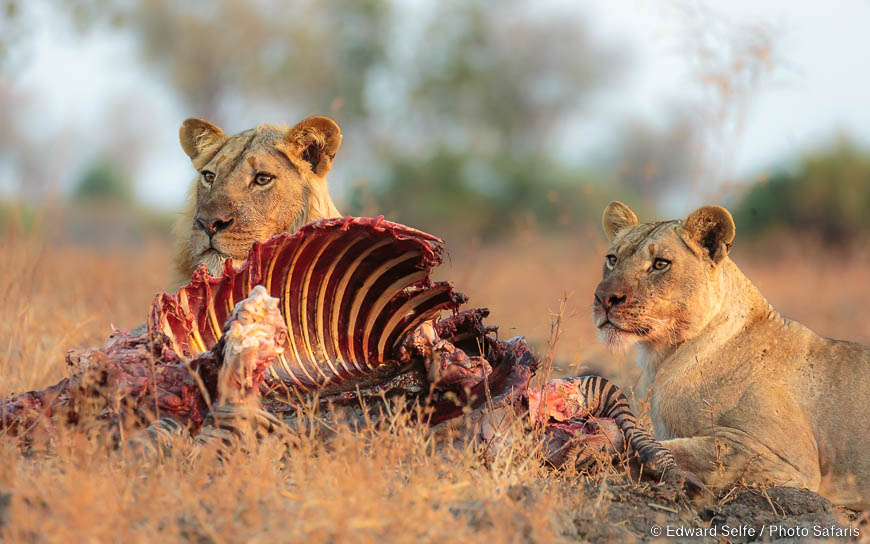
Early next morning, from camp I could hear a lot of commotion from the site of the zebra kill. Hyaenas appeared to be baiting the lioness, but it was hard to believe that she could be holding off the hyaenas on her own. Well it turned out that she wasn’t! She had been displaced by two young lions from the MK pride who were feeding hungrily on the carcass.
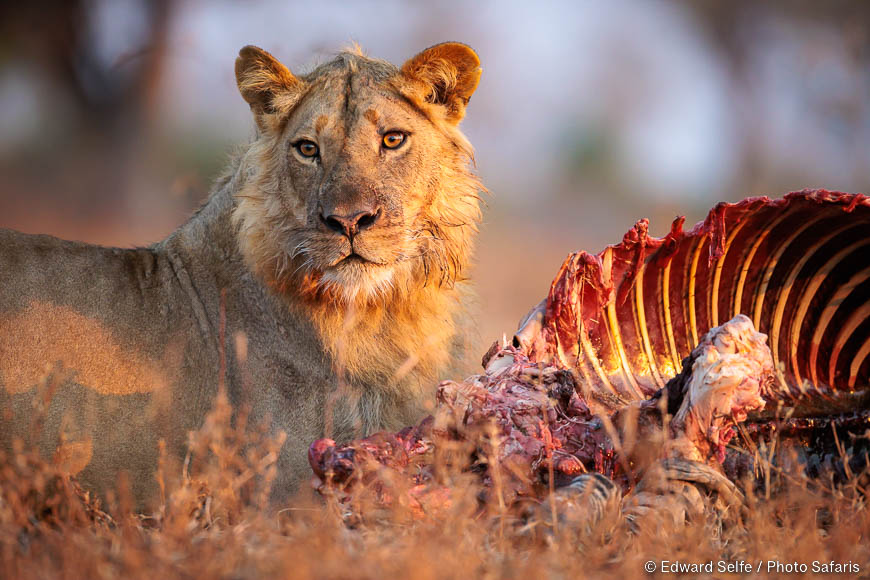
We were able to park in a gulley and get the lowest possible angle and the light was spectacular. In fact, it was almost too good for the subject matter!
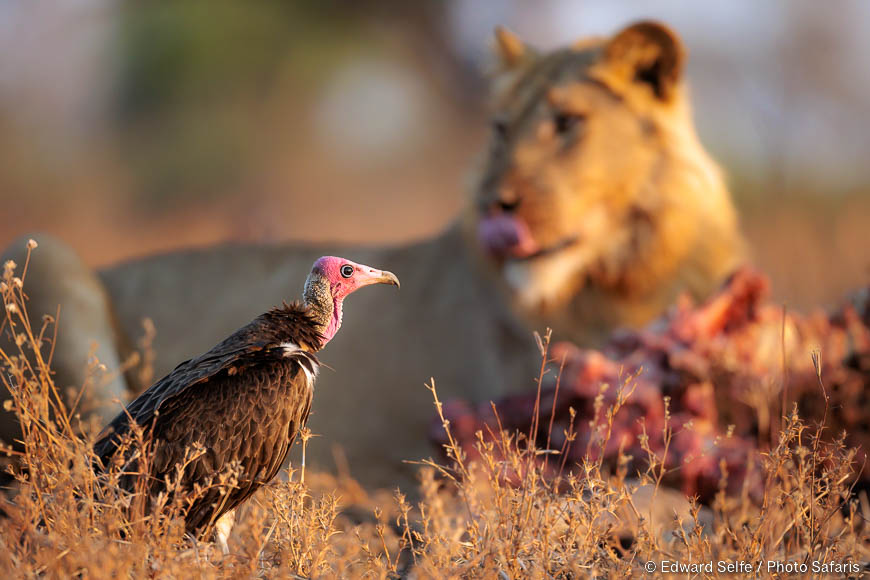
The vultures were waiting their turn, but not getting much luck.
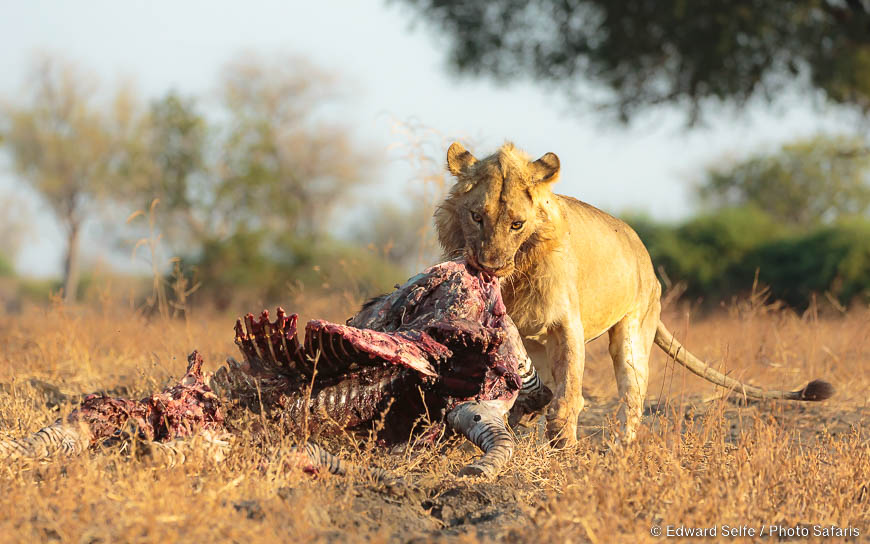
Eventually the young male got too warm and dragged the carcass off to a nearby tree. The vultures celebrated with all the scraps that he left behind.
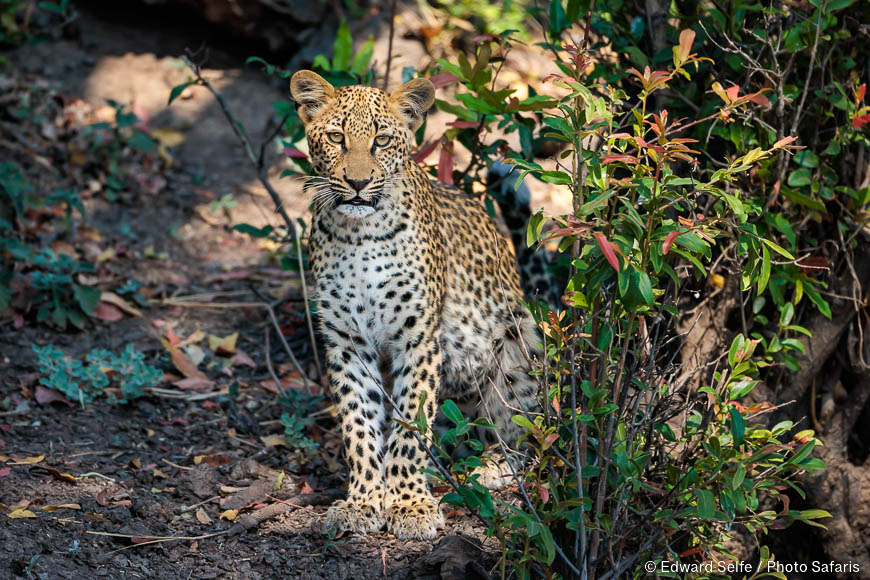
We caught up with the two young leopards again — and in fact, their mother left them for about 3 days in total, apparently without taking them to a meal. They would likely have caught some small prey for themselves but they’ll surely be very pleased when mother turns up with a larger meal and they can fill their bellies.
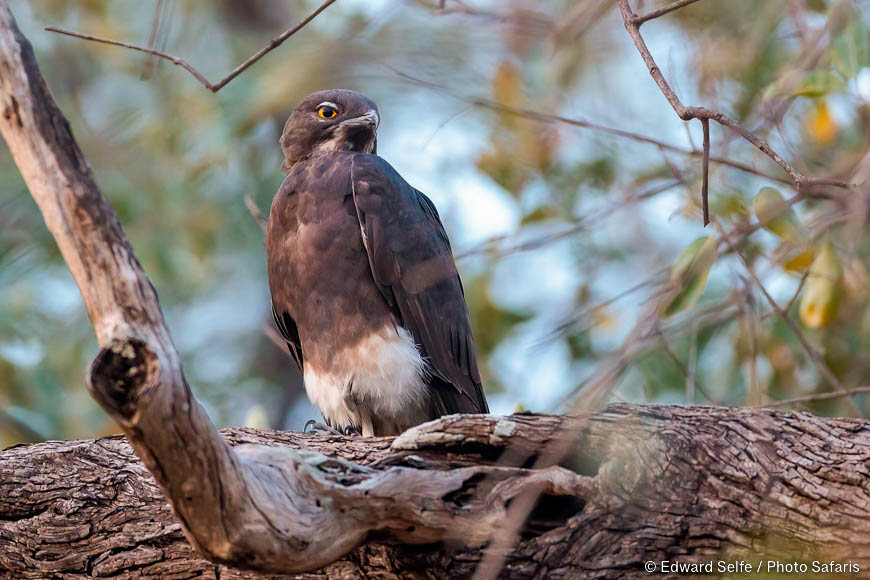
Late one evening, I spotted a bat hawk hunting over the treeline. It seemed suddenly to disappear so on a chance, I went after it. We tracked it down to a resting place where we could get good shots; it’s not common to get daylight shots of this elusive crepuscular raptor.
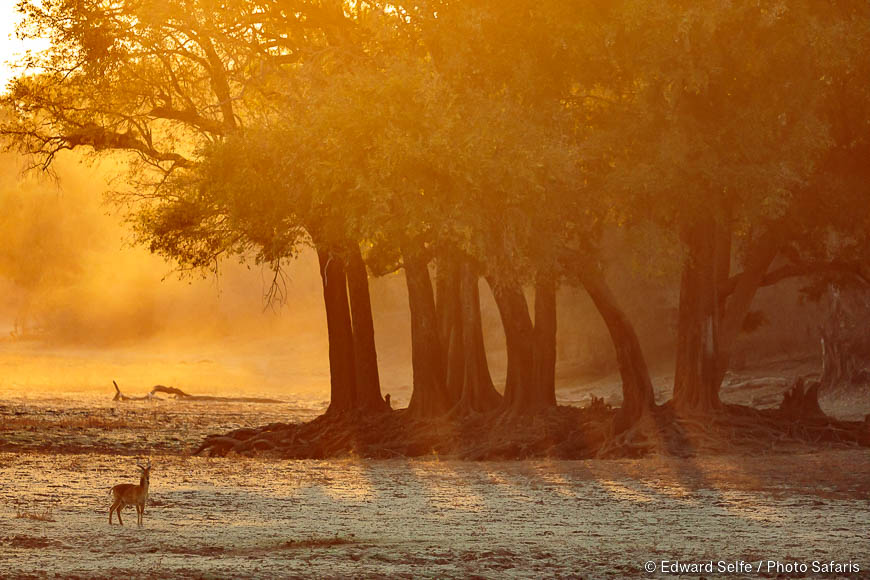
Early morning light…
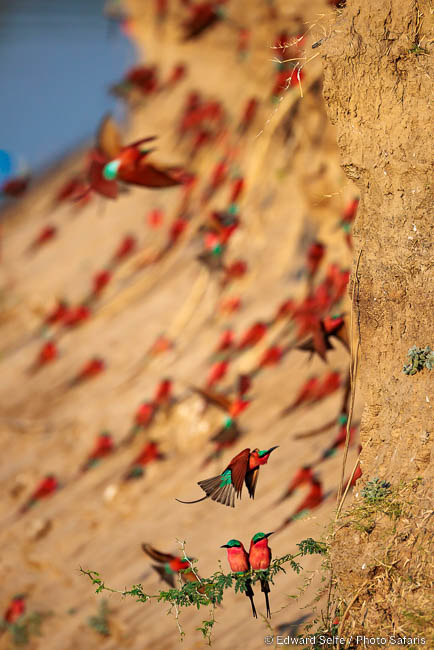
….prior to another session with the carmine bee-eaters. While the carmine hide is excellent, I also like the variety (not to mention freedom of movement!) afforded by sitting on the bank above the colony. There is a better chance to introduce depth of field effects to the images, and it’s easier to track birds in flight.
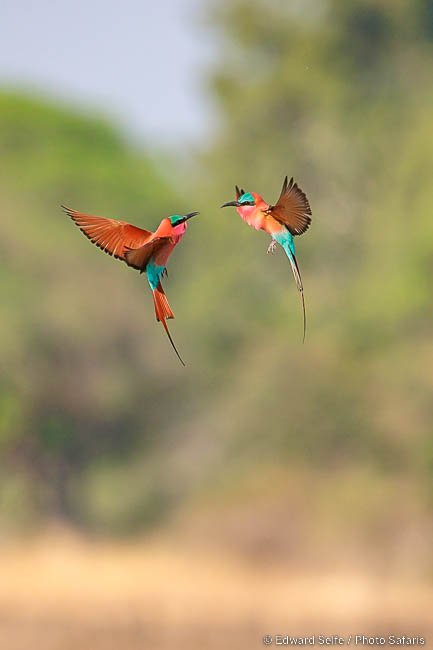
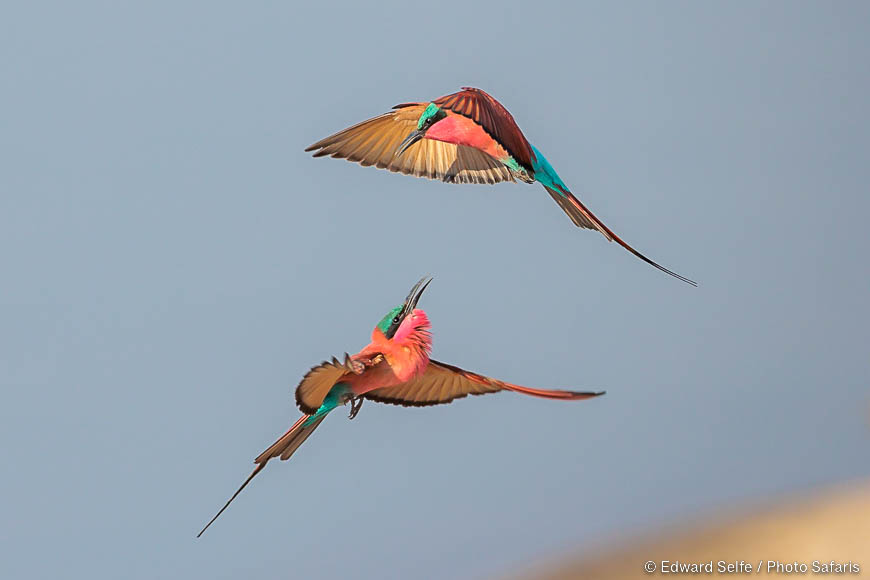
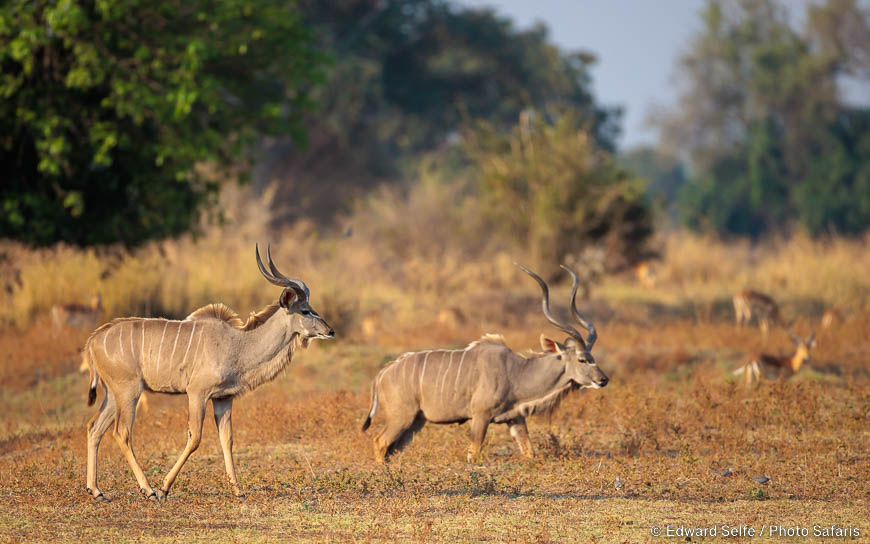
We wrapped up our time in the northern part of the park with some classic male kudu — always a special of this area….
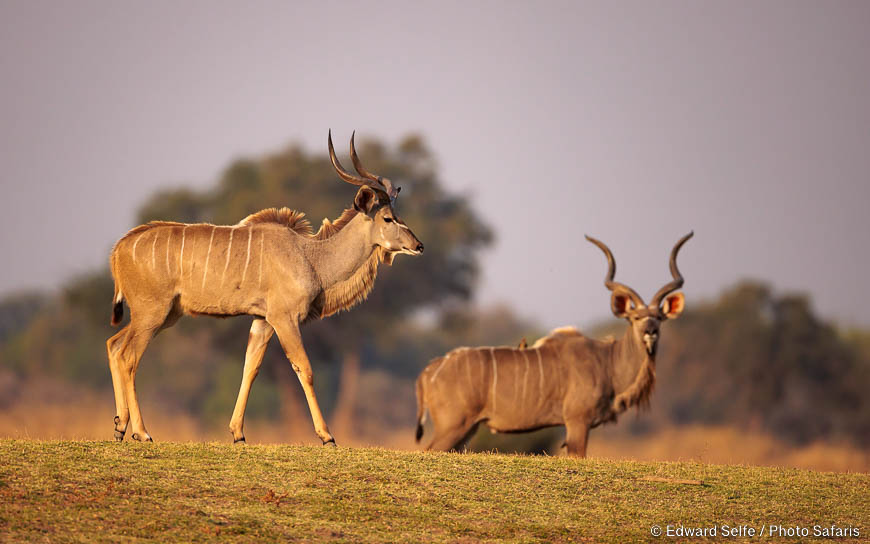

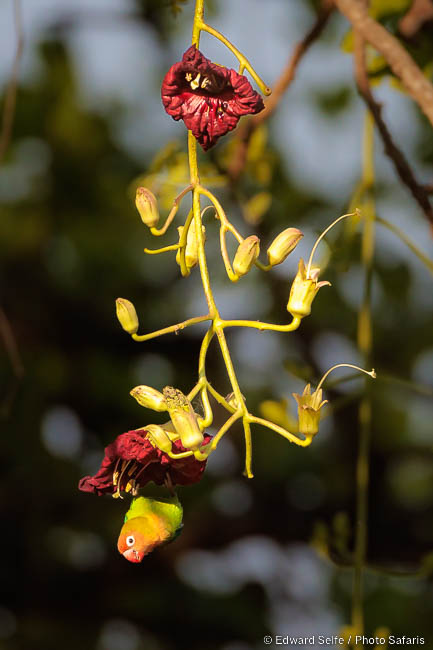
…a visit from a Lilian’s love bird which came in very close…
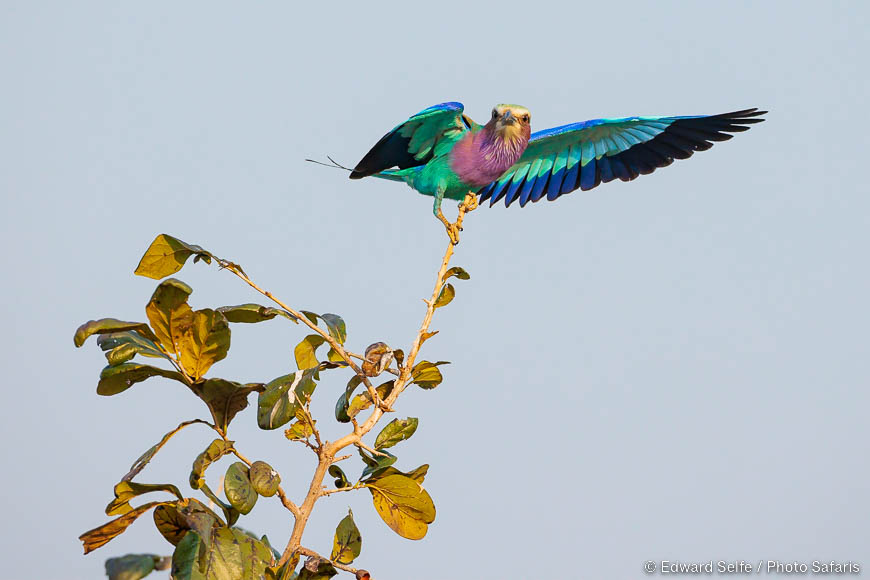
…and a gymnastic roller.
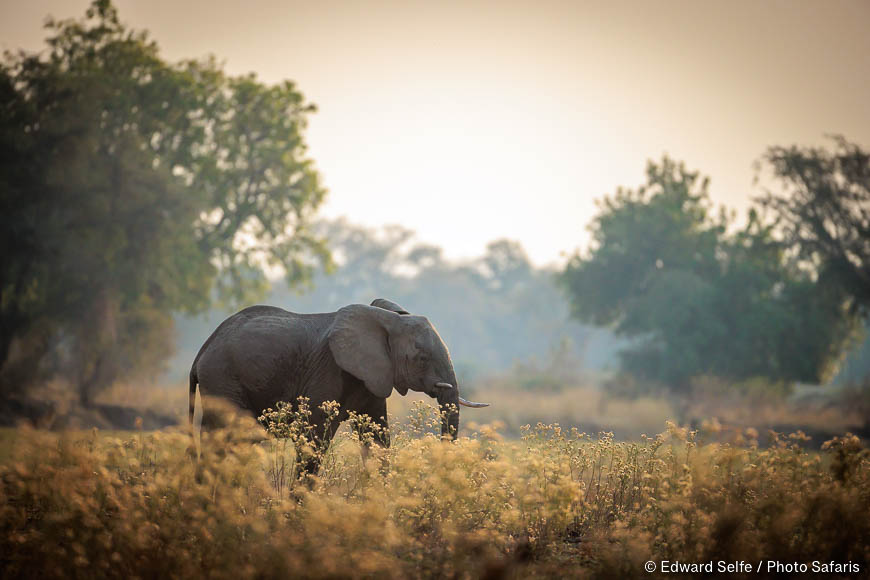
Our final morning saw some special light in the pre-sunrise glow…
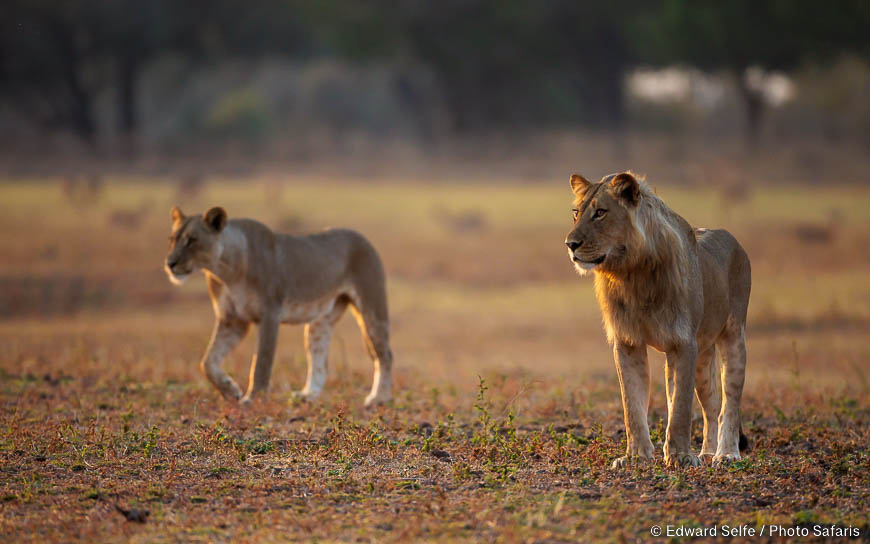
…and the welcome return of the Hollywood pride which had been largely absent from the area for the whole time we had been there. I picked up their tracks along the river in the early morning, stopped to listen and located them from the insistent alarm calls of impalas in the distance. They patrolled across the dambos in front of Lion Camp in the early light and gave us superb shots of them and also the alert antelope all around.
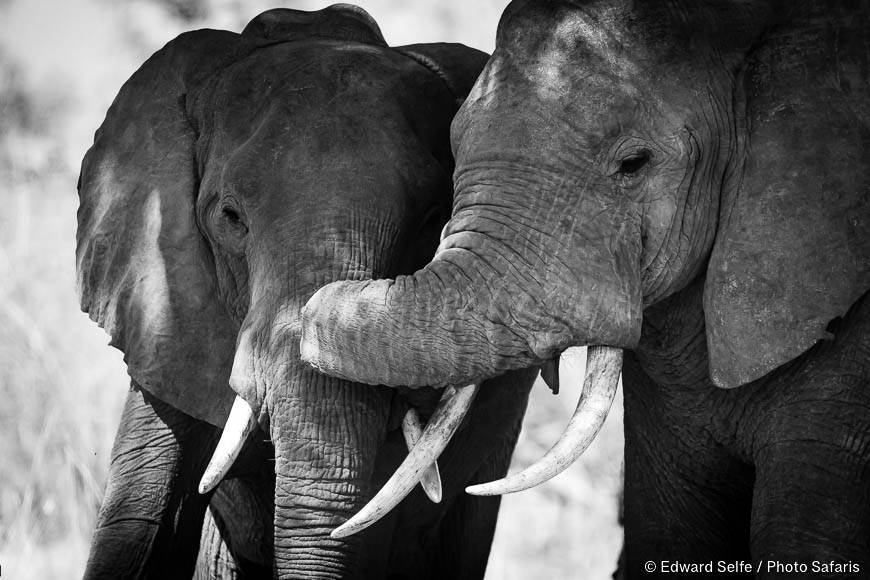
And then it was time to head south to the river crossing to access the wild and beautiful Nsefu Sector…
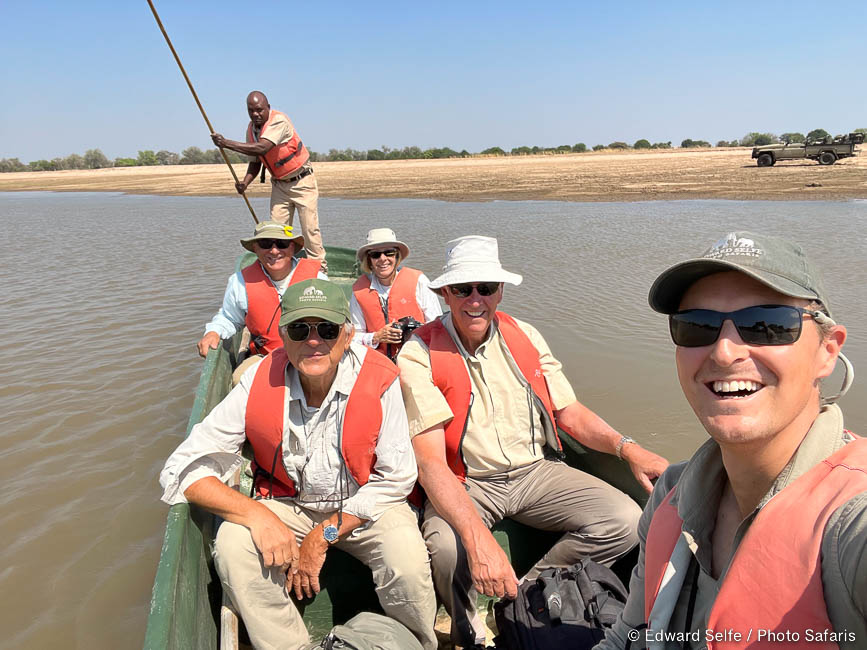
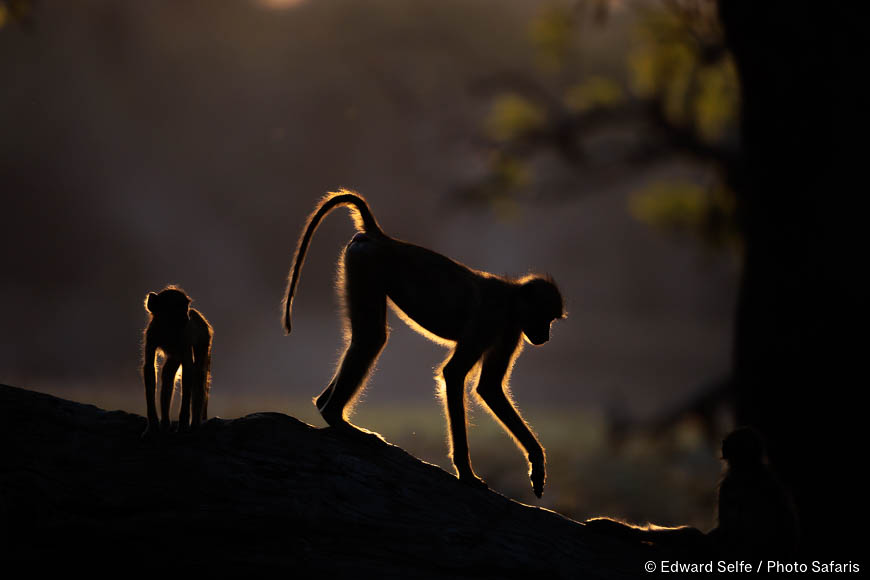
Having had such good fortune with predators on the western bank of the Luangwa, I decided that we would focus our attention on great Leith, wherever we could find it. On the first afternoon, it was in the ebony grove where we waited a long time for the dipping sun to coincide with the fluffy coats of the baboons…
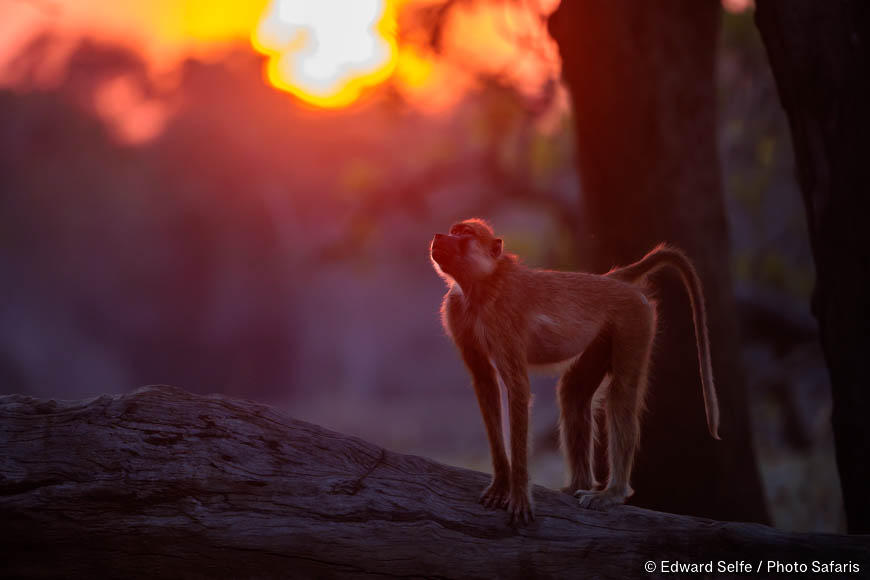
…with great success…
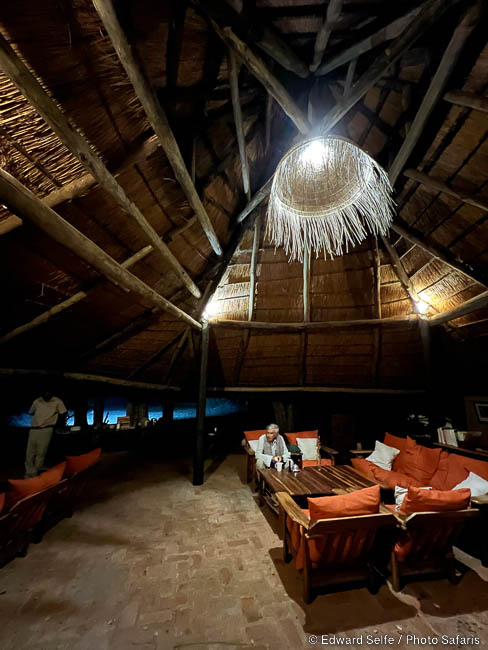
..before heading back to the historic and beautiful surroundings of Nsefu Camp.
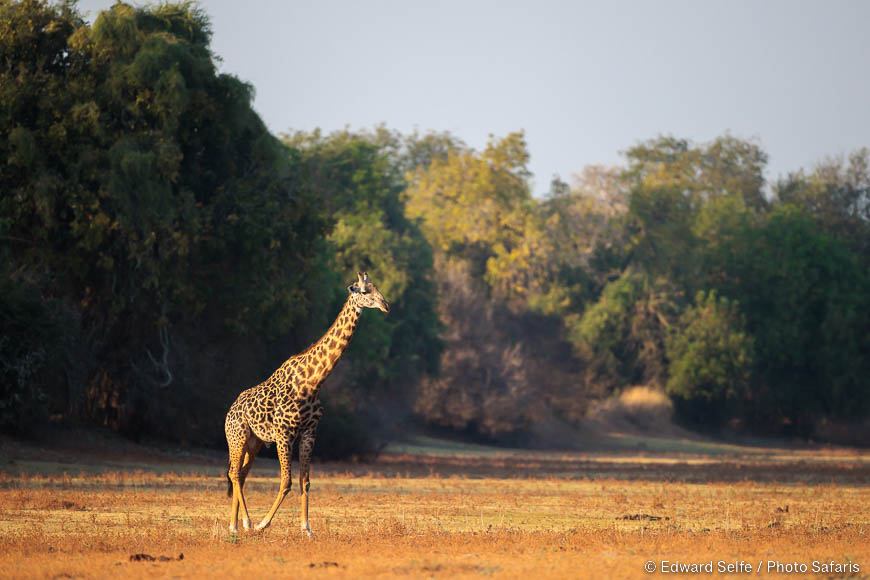
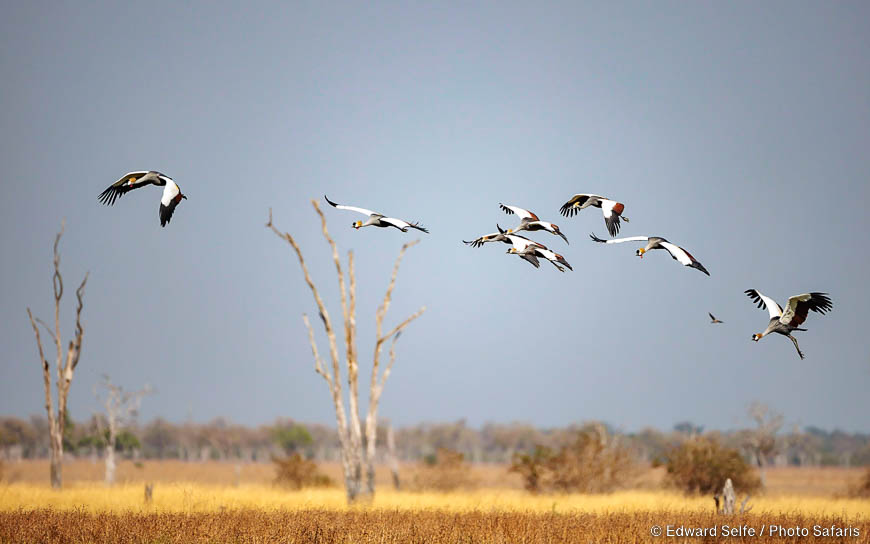
With an extended trip, we had time to explore inland to the Nsefu Salt springs and wait for the daily arrival of several hundred crowned cranes to the marshy area to feed. We worked on composition…..
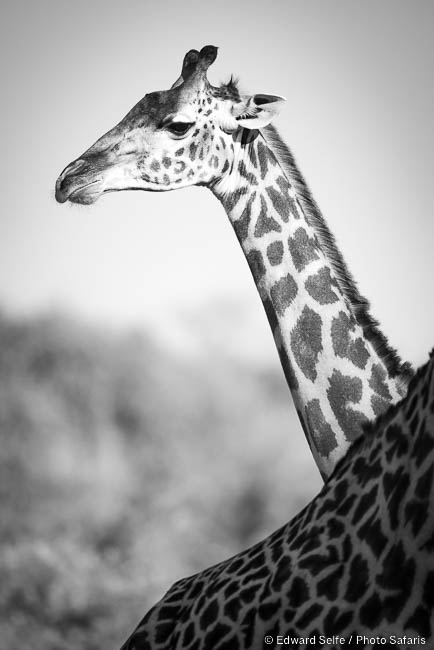
…including how to make special images from standard situations.
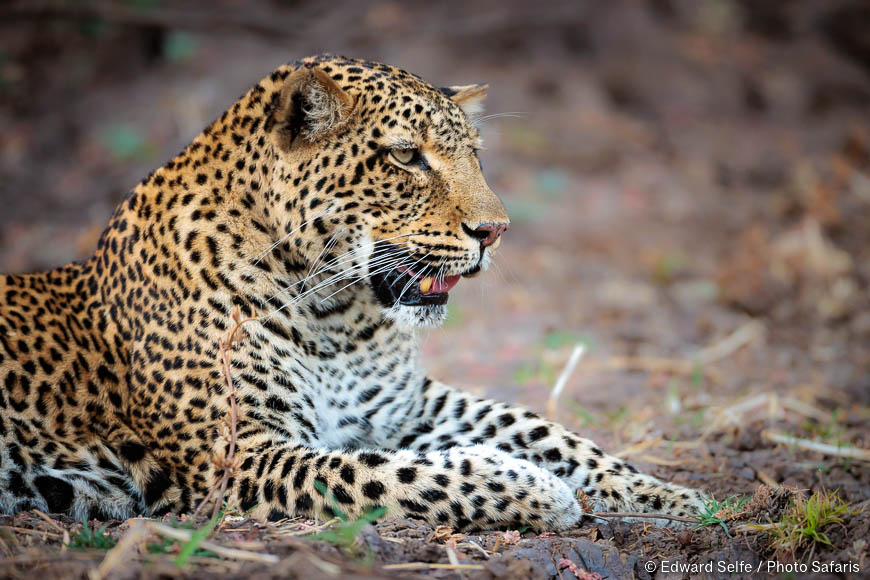
Inevitably, taking it slow led us to the predators and we spent a nice afternoon with Olimba, who called noisily several times while we watched…..
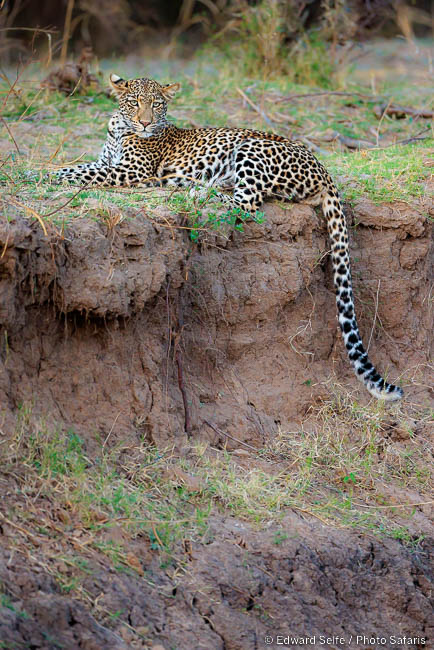
…and also with her daughter Mutima who was resting on a bluff nearby.
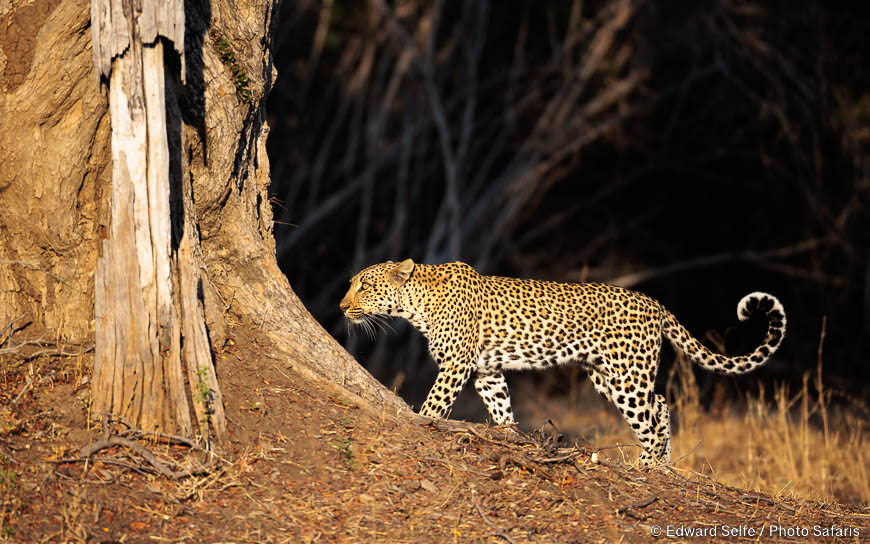
One morning, I spotted a leopard hiding in a sausage tree near the road. It was still dark and just her hanging tail had given her away. She was waiting for antelope to come and visit the tree, but there were none nearby so she came down….
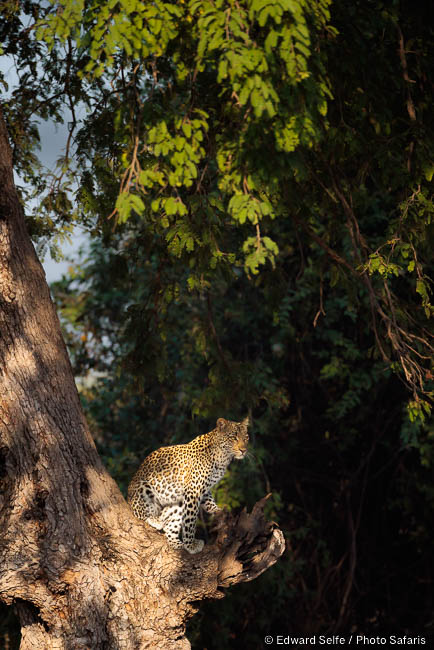
…and led us to her year-old cub who was waiting in a nearby tree!
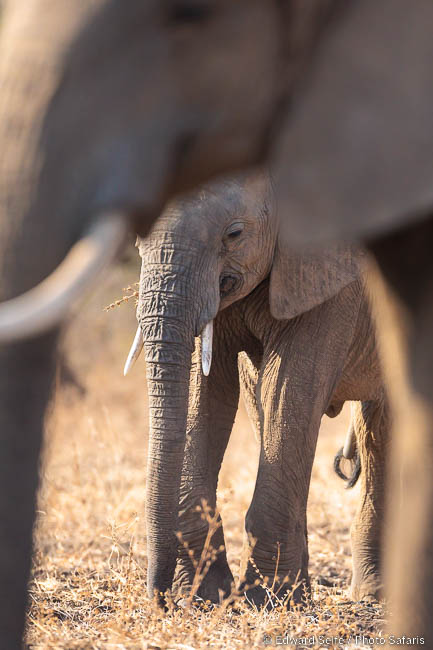
Of course, being the Nsefu Sector, there were lots of elephants everywhere and we were able to choose from an abundance of sightings. This family were feeding towards the vehicle and the soft afternoon light bouncing off the dry ground erased all the hard shadows.
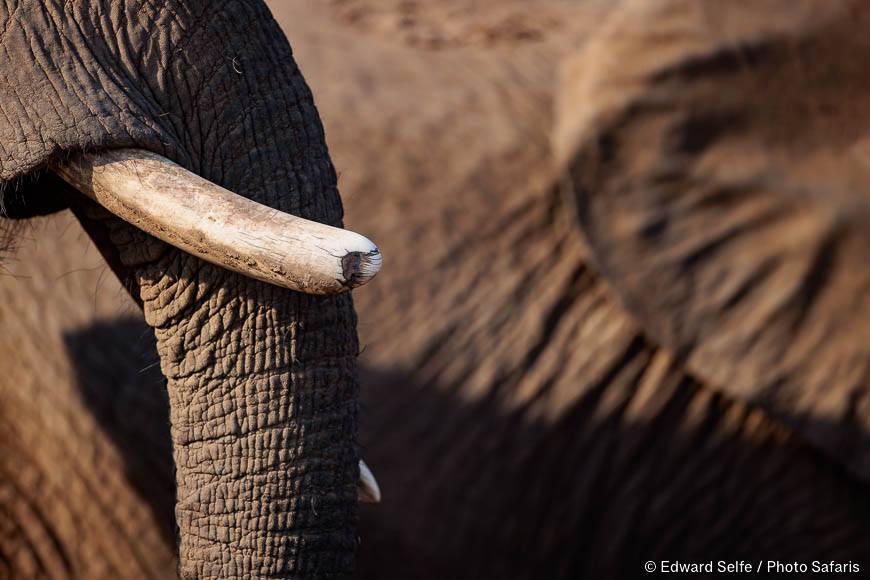
When animals approach, some people change to the wider lens. I tend to reach for my longest lens using the chance of a close-up animal to take very close up images.
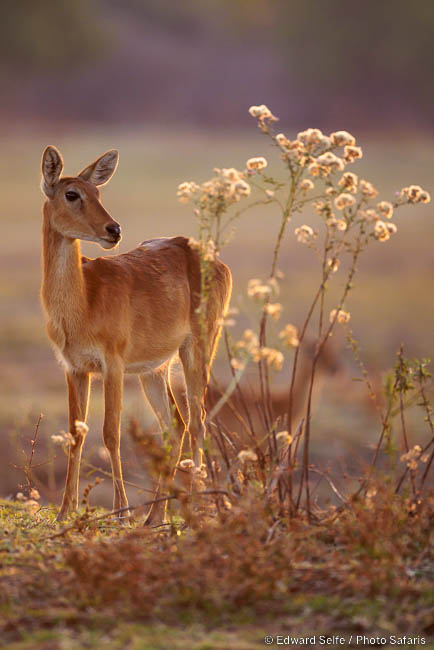
Sometimes it’s the simple images that are really pleasing…
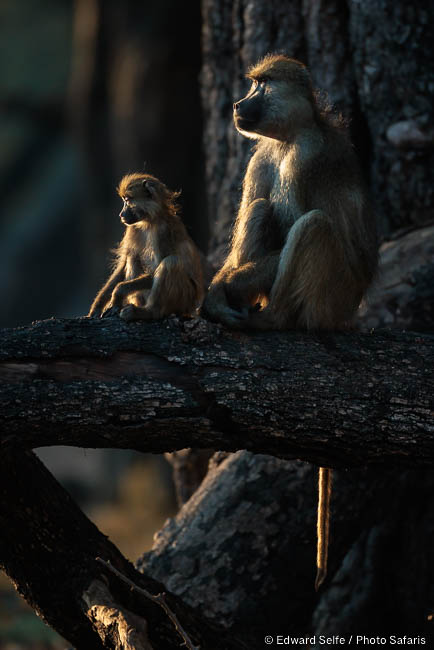
…and it’s always alwasy about the light.
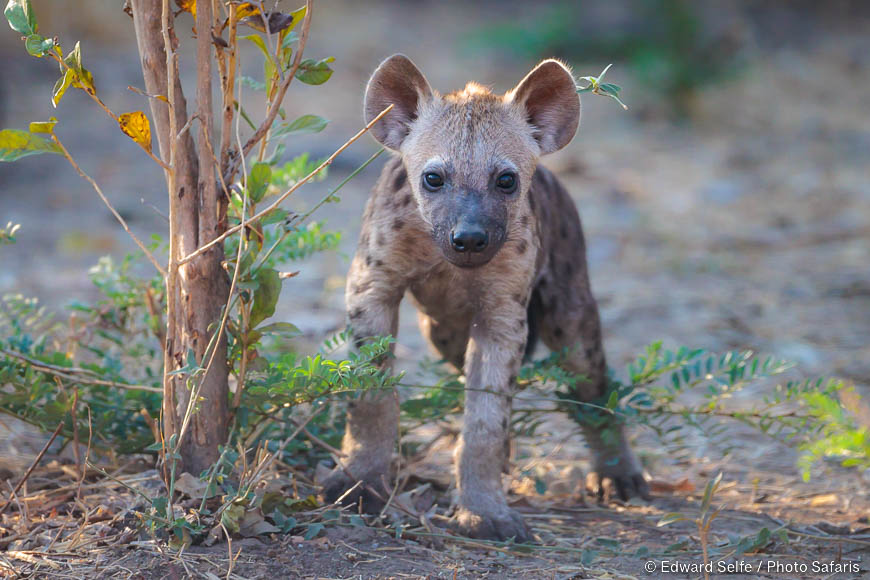
On our very last morning, we had the chance to visit an active spotted hyaena den. There were 4 pups being cared for by 2 adults. They were fun, inquisitive and very amusing.
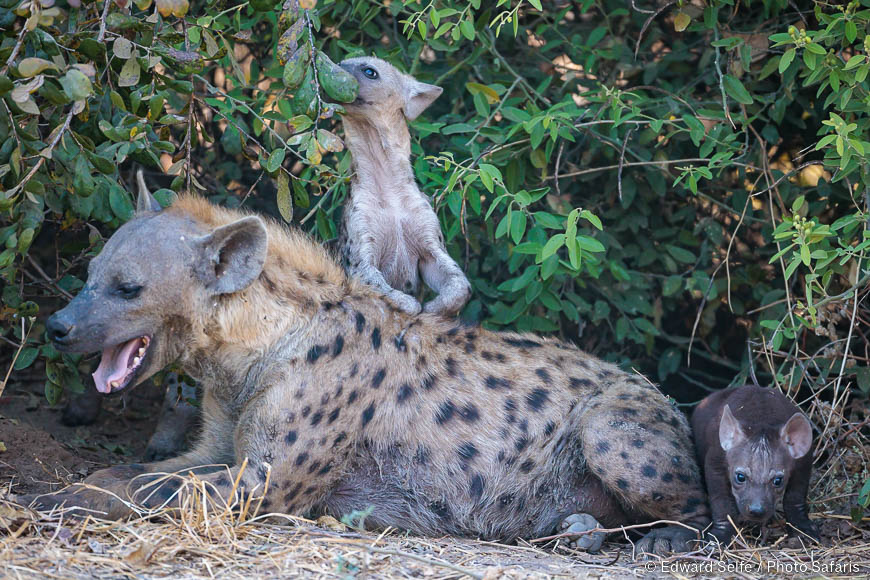
The smallest is perhaps 2 months old, based on his black coat colouration.
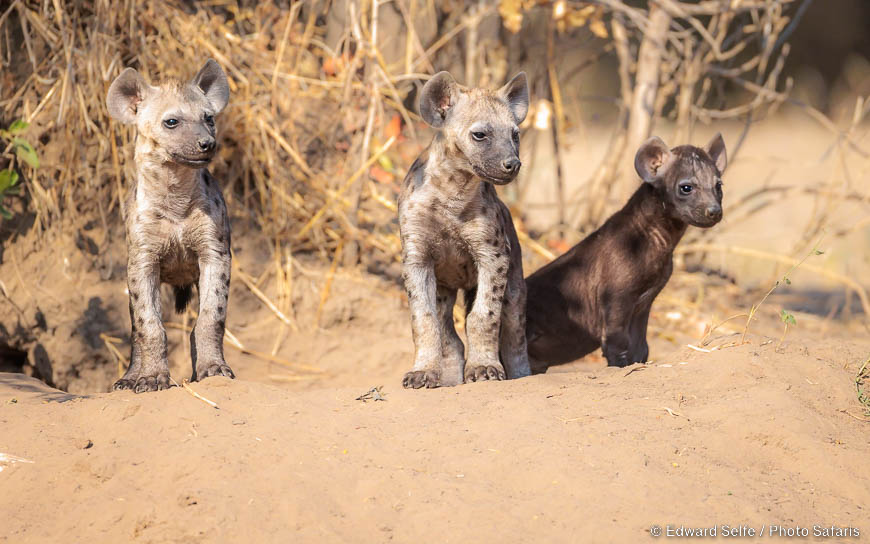
Finally, after a long wait, we got 3 of the 4 sitting at the mouth of the den watching approaching buffalo approaching!
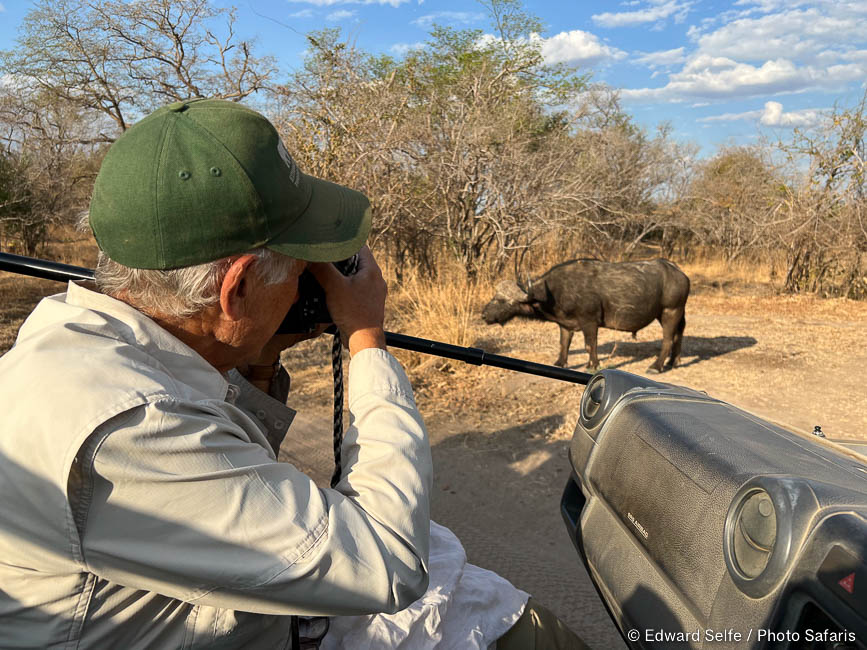
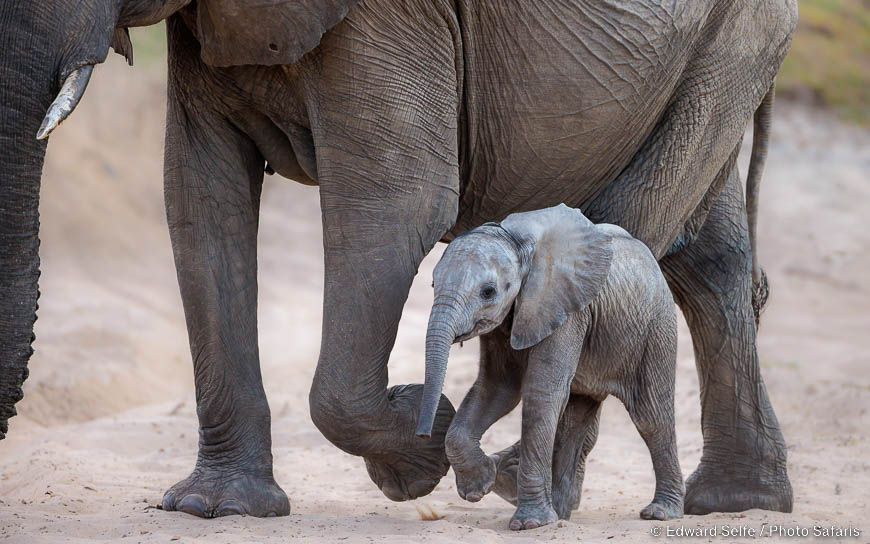
Heading home for the final time, we enjoyed this young elephant…
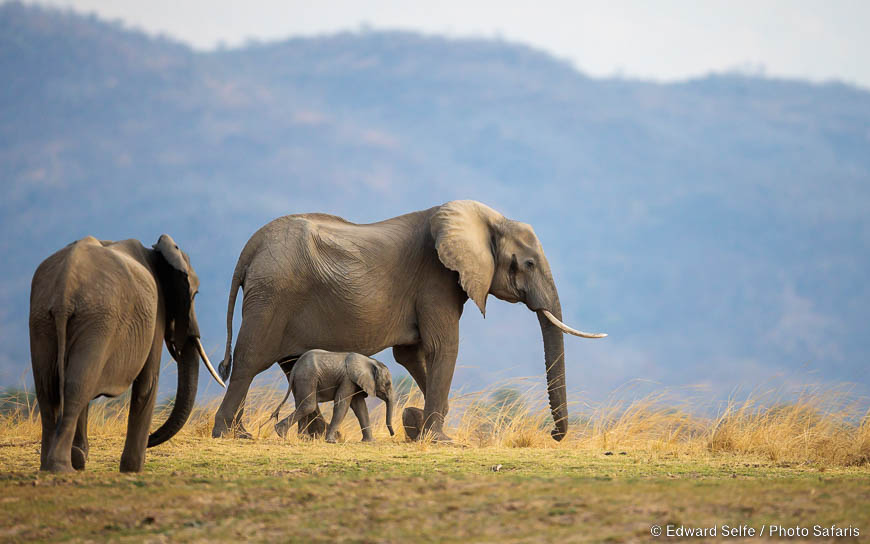
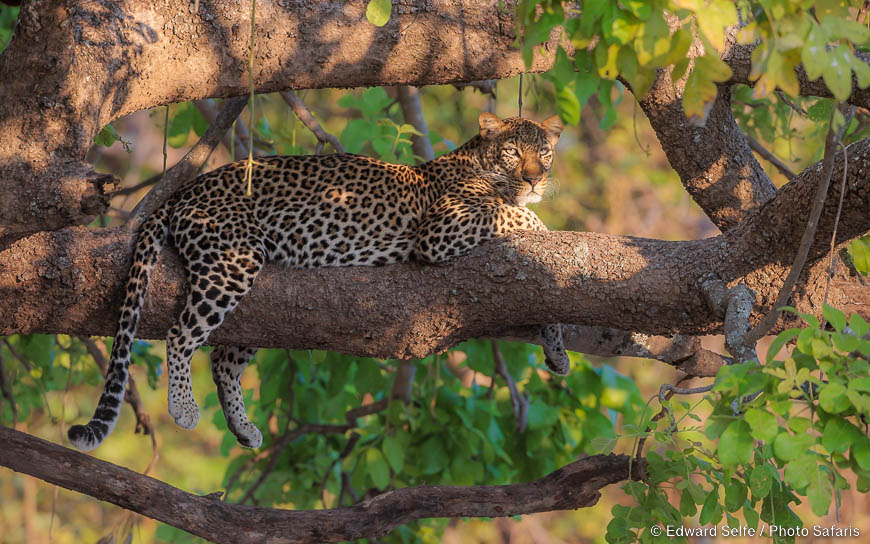
…and we ended the safari with a superb and beautiful female leopard. Surely a fitting conclusion.
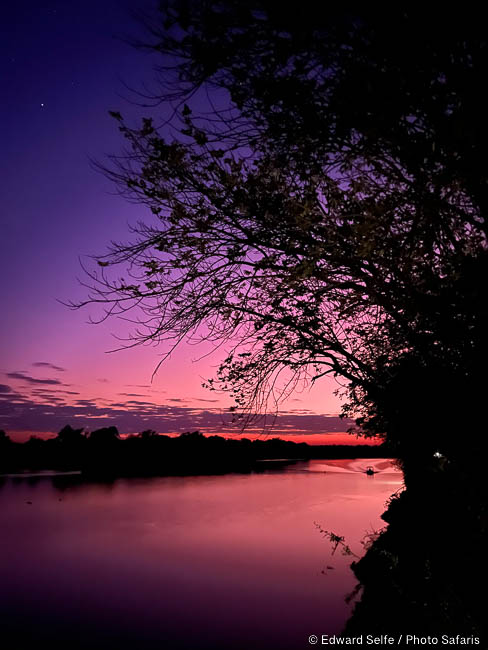
I do a lot of these trips and it’s possible to compare one with another. However, when I look back at these images, and I write up the trip, I conclude that each trip is totally different from the last, and each has significant highlights that define that tour. In fact, there are pretty significant highlights almost every day and, for that, I am endlessly thankful to the wildlife of Zambia which continues to keep me interested, amazed and humbled. If you would like to explore Zambia with me in 2023, get in touch soon as my season is almost full. Else I am looking ahead to 2024, with tours to Botswana, Zimbabwe and, of course, right across Zambia.
Thank you for reading right to the end. As always, you can see more, including movies and behind the scenes images, on my Instagram page. Look at the highlights section to see my daily diaries.

